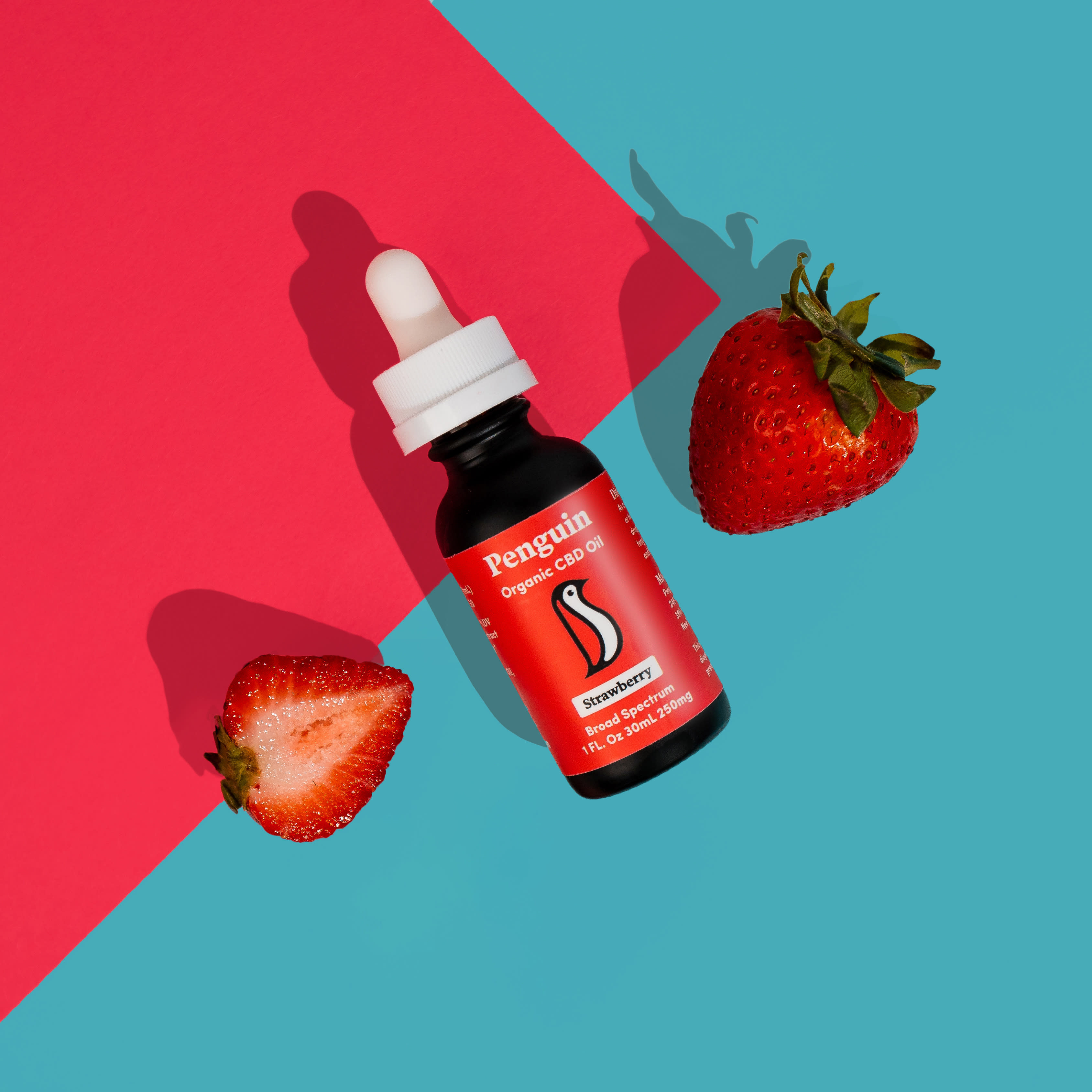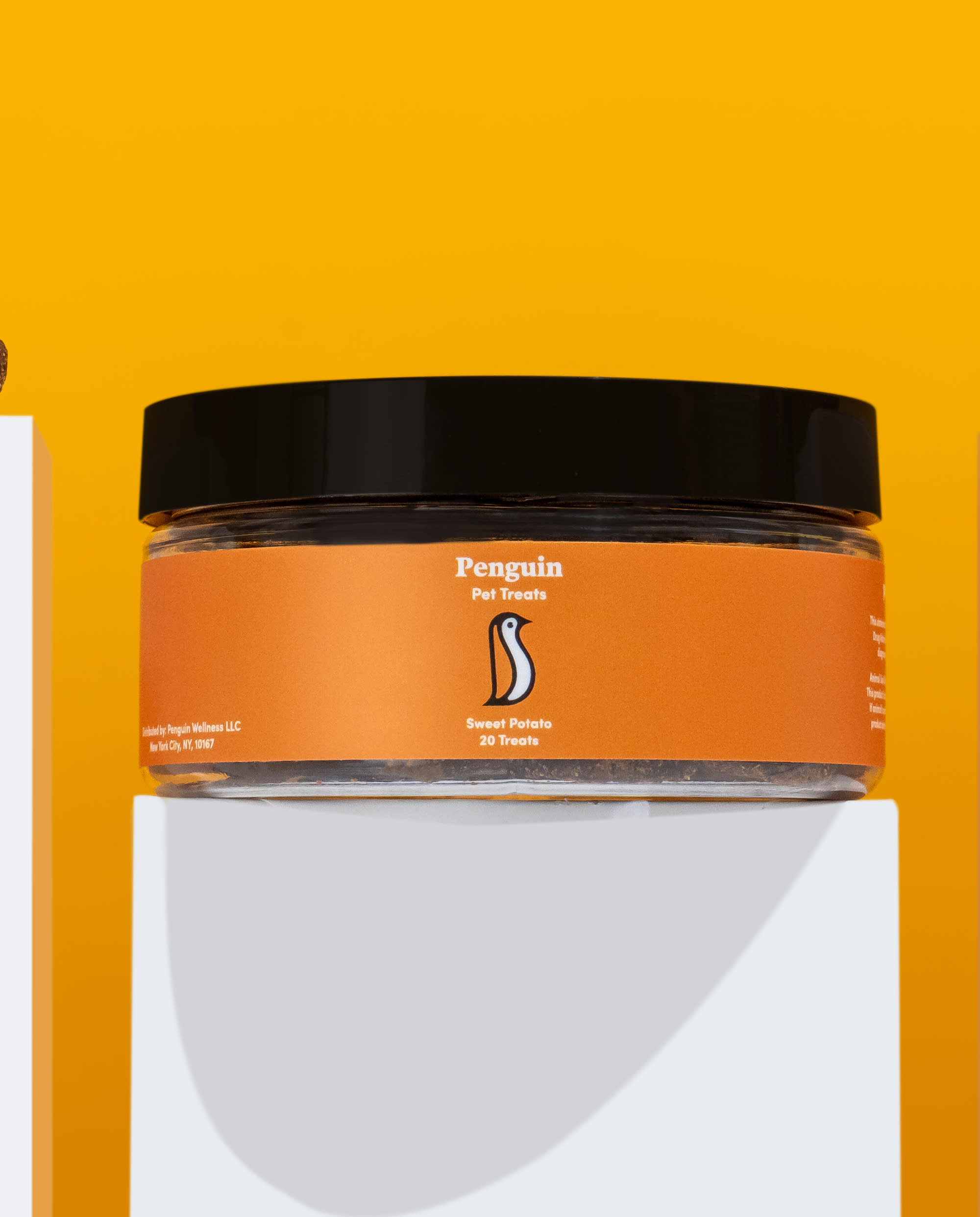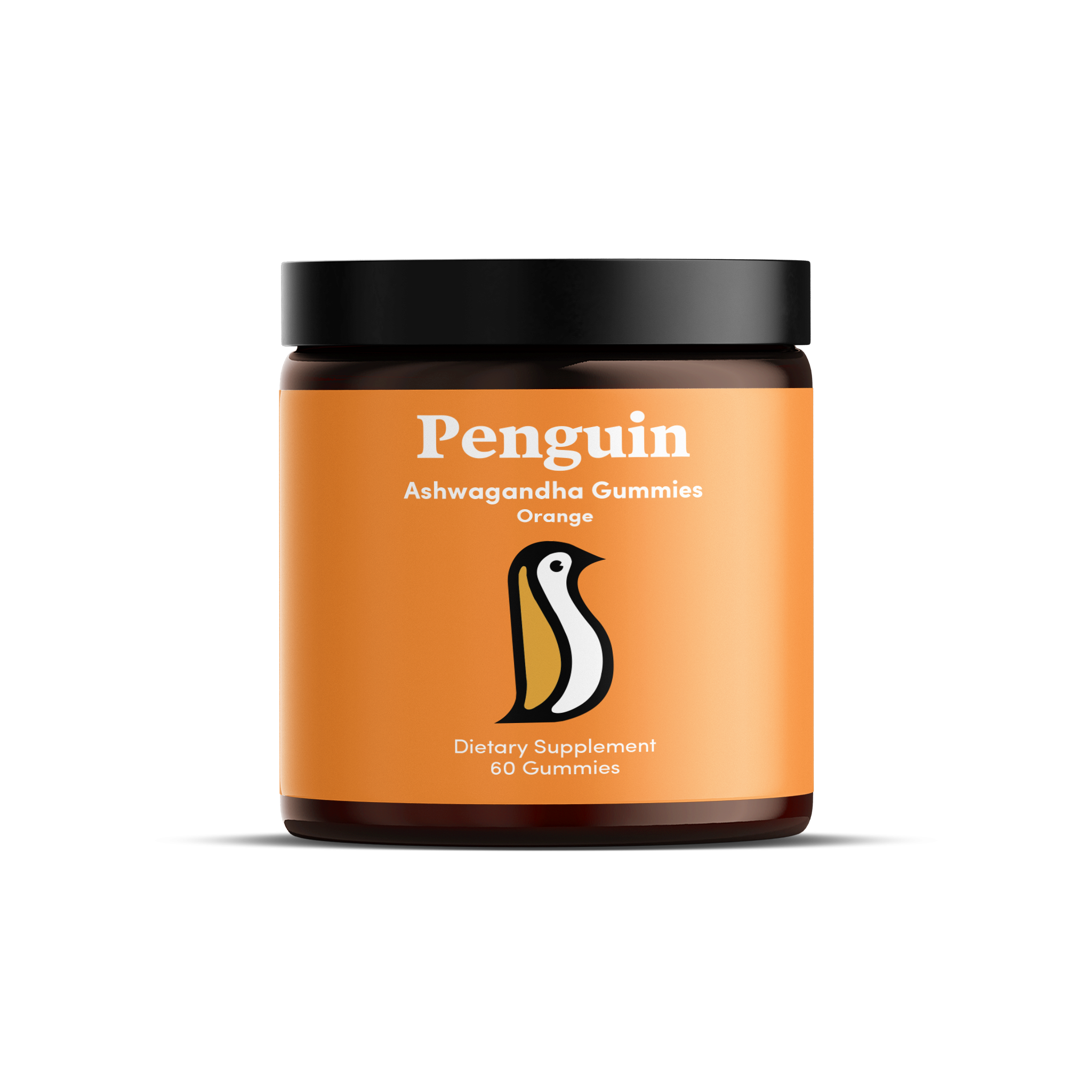10 Natural Ways to Manage Stress
 By Penguin CBD
By Penguin CBDStress is an affliction that affects both the physical and mental health of people who experience it. Stress can be defined as a disruption to the body’s harmony, or homeostasis, and the body’s response to this change.
The nervous and endocrine systems respond by producing hormones which result in short-term physiological reactions like increased heart and respiration rates, blood pressure, and perspiration, as well as a suppression of immune function.
According to APA's 2019 Stress in America survey, more than 75% of adults say they experience physical or emotional symptoms of stress, such as headache, chronic fatigue or trouble sleeping.
There is a plethora of research that has been dedicated to the long-term, effects of stress, and it has been linked to cardiovascular disease, obesity and overeating, depression, diabetes, headaches, hypertension, neck and back pain, and the list goes on. The World Health Organization states that work related stress is the second most frequent health problem, and it affects up to a third of the population significantly.
Our bodies are resilient and stress is not always a bad thing. Stress can challenge us and help us grow and become stronger, physically and mentally. But if the stress we are experiencing is persistent in a way that is interpreted by the body as a threat more than simply a challenge, our production of cortisol is increased.
Cortisol is important for our health, but an overproduction of it can cause a number of unwanted symptoms. An increase in cortisol boosts energy, but it also suppresses immune function, which can have significant negative effects on our health.
So how do we keep the good stress and ward off the bad?
Understanding our options for stress management is important to help reduce stress-related disease and the long-term effects it can produce in our bodies. There are natural (and not to mention, totally free), evidence-based techniques that are easy to learn and put into daily practice for preventing the accumulation of stress, and enhancing overall health.
In this article, we here at Penguin CBD outline ten completely natural and free ways to manage stress that you can put into practice and begin to feel the positive results immediately.
1. Progressive Muscle Relaxation (PMR)
Progressive muscle relaxation (PMR) is a research-backed technique that helps to reduce stress and anxiety by alternately relaxing and tensing the muscles. PMR was developed in the early 1920s by American physician Edmund Jacobson who believed that since muscle tension is linked to anxiety, that one could reduce anxiety by reducing muscular tension.
The physical component of PMR involves alternately tensing and then relaxing a particular muscle group in the legs, arms, abdomen, chest and face.
The mental component involves the individual focusing on the distinction between feeling relaxed versus feeling tensed, and then learning to identify these differences. Practicing PMR regularly can help us learn to identify when our muscles are tense and physically relax them before their tension has adverse effects on the body, which can then help to reduce the symptoms commonly associated with stress.
How to PMR:
As a quick example to show you how PMR works, try squeezing one of your fists as hard as you can for ten seconds and take note of how this feels. After ten seconds, release and allow your hand to relax completely. Take note of how this feels in comparison.
This is a step-by-step example of one type of PMR that you can do at home, or anywhere else, the next time you feel stressed or anxious:
- Find a comfortable position in a place that you will not get distracted in. You may close your eyes if this feels comfortable.
- Inhale deeply through your nose and expand your diaphragm with air and exhale slowly through the mouth, contracting the diaphragm (see instructions for diaphragmatic breathing, #2 on this list). Repeat this a few times.
- Start with your feet, tightening the muscles as hard as possible for a few breaths, and then release completely.
- Work your way up through all the muscles of the body, tensing and then releasing the legs, glutes, abs, back, hands, arms, shoulders, neck and face. Repeat any areas that feel especially tense.
- Finish the practice by taking a few more diaphragmatic breaths, and notice how you feel.
Perform this routine 2-3 times daily for 15-20 minutes per session to become accustomed to the PMR technique so it will be more easily practiced during times of overwhelming stress. PMR is a skill that needs to be practiced so that you are able to use this technique when you need it most.
The basic idea behind PMR is to learn to understand and become aware of when our body is feeling tense, and also how it feels to be relaxed. Understanding the difference between these two sensations and being able to identify them will help us to control these feelings before they take control of us.
In addition to helping to manage the short term effects of stress, research has shown that PMR has many long-term health benefits, including the reduction of cortisol levels and generally reduced anxiety, decreased blood pressure and heart rate, decreased headaches, and reduced neck and back pain.
2. Diaphragmatic Breathing
Breathing is one of the most natural functions of the body. We do it without even having to think. It is also one of the first ways in which the body signals to us that we are in a stressful situation—the body’s natural physiological reaction to experiencing stress is the transformation of normal, regular breath to quick, shallow or irregular breathing.
Conversely, slow, regular, and deep breathing is a sign that the body is relaxed, like when we fall asleep.
We can actually trick our bodies into relaxation by mimicking these slow respirations through the technique of diaphragmatic breathing. If your breathing becomes relaxed, the body and mind follow.
Here's how to practice diaphragmatic breathing:
- Breathe in through the nose slowly and deeply, pushing your stomach out to take up as much space as possible. Expand the lungs, stomach and diaphragm. In yoga, they call it a ujjayi breath.
- Hold your breath for 5 seconds.
- Exhale through the mouth loudly, thinking "relax." Contract the diaphragm, drawing your navel to the spine. Close your eyes if you want.
- Repeat as many times as necessary, breathing deeply and slowly until the body begins to relax.
Diaphragmatic breathing is easy to learn, and it is a useful technique that you can use at any time, and in any place, to manage stress. It is useful to practice in advance so it is easier to use this technique as unexpected feelings of stress occur.
Consider making diaphragmatic breathing a daily exercise, even when you are not feeling especially stressed, to improve your overall mood and even prevent the accumulative effects of stress building up in the body. It may seem like an overly simplified solution to dealing with stress, but the results speak for themselves.
3. Transcendental Meditation
Transcendental Meditation (TM) is a form of meditation that originated in India, and uses a mantra—a word, sound or phrase repeated in one’s mind, silently, to prevent any distracting or negative thoughts. TM aims to create a state of “relaxed alertness”
There has been extensive research dedicated to the potential benefits of TM on mental health since its introduction to the western world, which has emphasized the role TM can play in significantly reducing stress and anxiety, and it is one of the most widely practiced meditation techniques today.
The goal of TM is to control our involvement in our stream of thoughts, allowing us to achieve a sort of “thoughtless awareness,” whereby we become acutely yet passively aware of the present moment. This practice is a self-focused skill which is believed to result in mental and physical relaxation.
How-to practice Transcendental Meditation:
- Sit up tall in a comfortable chair with your feet on the ground and hands in your lap. Make sure your legs, feet, and arms remain uncrossed.
- Close your eyes, and take a few deep diaphragmatic breaths.
- Open your eyes once more, and then proceed to close them again. Your eyes will remain closed during the entire 20-minute practice.
- Repeat a mantra in your mind. This can be a hum, noise, a word, anything. Think of positivity and balance when you choose your mantra, you don’t have to tie too much attachment to its meaning. Really, don’t agonize over it. Instead, you should focus on the sound it makes when it leaves your mouth. Whatever grounds you, calms you, and brings you back to the present is what will serve you best. You can even look up some Sanskrit mantras online that you like the sound of.
- When you recognize that a thought of any kind is creeping into your mind, simply return to the mantra.
- After 20 minutes, slowly begin to move your fingers and toes to ease yourself back to the world. Open your eyes.
- Sit for a few more minutes, breathing slowly and listening to your breath until you feel relaxed, and then get ready to continue your day.
4. Positive Affect Journaling
Stress can become overwhelming to the point where our minds race relentlessly over every little detail that is affecting our lives at a particular moment. Writing our thoughts down can be surprisingly therapeutic, even when we are unaware that they are plaguing us. Research has shown that expressive writing, or positive affect journaling (PAJ), as an emotion-focused, self-regulated intervention to stress and anxiety, has garnered positive outcomes for many people who implement the practice.
Trials with patients experiencing depression have reported significant reductions in feelings of anxiety immediately after writing and continuously for over one month after PAJ.
Furthermore, several studies have found clinical benefits tied to PAJ in patients with inflammatory conditions, irritable bowel syndrome, and high blood pressure just to name a few, and has even been associated with small, yet consistent improvement to the well-being of cancer patients.
It has been found that those people who do not normally express emotions or find it difficult to do so will benefit the most from PAJ, as it provides a safe and structured outlet for expressing repressed feelings that will ultimately affect physical and mental well-being if left unexpressed.
However, PAJ can be beneficial to everyone, providing a safe and healthy platform to organize our thoughts and thereby reducing the anxiety surrounding them.
5. Exercise
You knew it was coming: exercise! There’s no escaping it. Not only will regular aerobic exercise bring amazing changes to your physique, energy levels, metabolism, and heart health, but also your spirits. Moving your body rigorously provides stimulation but also calm. It allows us to focus our energy elsewhere, and get out of our head, so to speak. Exercise has the unique capacity to simultaneously exhilarate and relax. The physical and psychological health benefits of exercise have been well-documented.
Clinical trials have verified that regular exercise is a powerful tool in treating anxiety disorders and depression. The mental benefits of exercise is neurochemical—regular exercise actually lowers the production of the body’s stress hormones (cortisol) while stimulating the production of endorphins (the body’s natural painkiller and mood elevator).
In addition to the chemical function of exercise, there also is the possibility that exercise serves as a break from the focus on what is causing our daily stress. You can never underestimate the power of turning your focus elsewhere; even a small mental break can significantly lower feelings of stress and anxiety.
6. Relaxation Response (RR)
Like PMR, Relaxation Response (RR) is based on the idea of counterbalance. In the 1960s, Herbert Benson discovered a useful counterbalancing technique to respond to stress. He found that while stimulating the hypothalamus area of the brain causes the stress response, activating the other areas of the brain can result in stress reduction. He called this counterbalancing mechanism the relaxation response.
When stress occurs, the physiological response in the fight-or-flight response where the body begins to physically react to the stress by increasing the heart rate, breathing rate, perspiration, muscle tension, etc. When the body is no longer under threat, the autonomic nervous system functioning switches off the fight-or-flight response and turns on the relaxation response (RR). The result is simply feeling relaxed!
The important characteristics of a relaxation program can be similar to those of meditation, but are much more broad and specifically cater to your individual tastes. Anything that helps to break the train of everyday thought—dancing, knitting, doing a puzzle, reading, going for a walk, playing with your pet, stretching, singing—there are as many ways as there are people to summon the relaxation response.
Remember that RR is always on the other side of a stress state, just waiting to be given the room to breathe, and help you relax. So the next time you are feeling the stress take over, pick up something you enjoy doing, something with no strings attached, and initiate RR.
7. Diet
Here’s the other one no one likes hearing: diet. We all know that a tub of ice cream or mom’s mac & cheese can be the best remedy for the blues, but how does what we eat in turn affect our mood?
Research has shown people with mood disorders and those who experience chronic stress often have poor quality diets, with low fruit and vegetable intake and high levels of fat and sugar. There has been increasing evidence that diets high in processed foods can lead to greater amounts of anxiety.
There are a wide variety of lifestyle changes that can help with managing anxiety, but diet is an important one not only for stress, but overall health. A diet full of fruit, vegetables, whole grains, legumes, and lean protein can improve energy levels as well as digestive health, organ function, and mood.
Some foods that can help to reduce stress and anxiety are:
- Fatty fish: Omega-3s in fatty fish such as sardines, mackerel, herring, salmon and trout are linked to cognitive function and mental health.
- Eggs: Vitamin D rich—vitamin D deficiency has been linked to depression and anxiety
- Green tea: A 2017 review found that 200 mg of theanine (an amino acid found in green tea) improved reported calmness and relaxation while reducing tension.
- Turmeric: Curcumin (the active ingredient in turmeric) may help lower anxiety by reducing inflammation and oxidative stress In a 2015 study, obese adults ingesting curcumin reported reduced anxiety.
- Brazil nuts: High in selenium, which reduces inflammation, which may therefore improve mood. Mushrooms and soybeans are also good sources of selenium.
8. Nature Break
The constant noise and movement of city life can take a toll on our health. A study conducted at Harvard University in 2019 found that as little as 20 minutes in a nature setting can significantly lower stress hormone levels. The settings in which these patients spent their nature breaks varied from yards to parks to small urban green spaces, sitting or walking. Cortisol levels for these patients dropped significantly after 20-30 minutes in their chosen slice of nature. Here’s another pro tip: leave the phone at home! This nature break only counts if you aren’t simultaneously scrolling through your phone.
For those who feel completely stuck in front of their screens with no nature in sight, fret not: even just keeping a small plant by your desk has been shown to help reduce anxiety.
9. Aromatherapy
Essential oils are often considered important in their therapeutic, aromatic, and cosmetic function, and their use as a complementary therapy has gained momentum in the 21st century. Their antibacterial, antiviral, anti-inflammatory nature—as well as immunity boosting properties, and calming, circulatory and alertness effects—have been well documented.
Aromatherapy is the practice of inhaling the scent of essential oils to achieve feelings of relaxation and calm. Aromatherapy is used as a natural remedy and complementary therapy (along with massage, etc.) to ease anxiety and reduce feelings of stress. An essential oil diffuser is the best method to experience aromatherapy, as essential oils should never be ingested or applied directly to the skin.
Essential oils that target stress and anxiety:
- Valerian
- Jatamansi
- Lavender
- Jasmine
- Bergamot
- Chamomile
- Frankincense
- Rose
- Marjoram
- Fennel
- Ylang ylang
10. Art therapy
Art therapy is something you can major in in university, and there are trained professionals who can guide you through this effective therapy. But the type of art therapy we are talking about here is totally self-directed.
There’s a reason paint nights have gained so much popularity—putting paint down on a canvas is meditative, it takes your mind off things (especially if remembering how to make the color green uses every last bit of your brain power), and it’s just plain fun. Art therapy is actually just another form of relaxation response, where we give our mind and body space to break the constant focus of our everyday worries.
And like journaling, it is another outlet through which we might be able to express feelings we have been holding in. Don’t worry, you don’t have to be a secret picasso for art therapy to work for you. A 2016 study showed that 45 minutes of art therapy can reduce cortisol levels, and thus reduce stress, regardless of talent.
The beauty of each of the techniques that have been outlined in this article is that they are free to try and practice whenever, and wherever, you feel like it on your own terms. On top of that, there are no side effects.
These are completely safe approaches to help train the body to manage stress. Start with whatever appeals to you most. There’s literally nothing to lose but the stress you’ve been carrying around, and I think you can afford to lose that!
While these techniques and practices are accessible to everyone who wants to self-implement some simple steps that can help relieve their stress and anxiety, chronic stress and depression should be assessed by your healthcare practitioner. These techniques may be only one part of your treatment journey.









